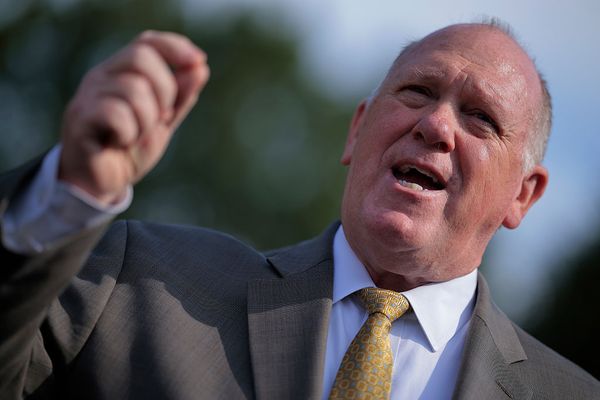
An Italian president does not have the direct, executive powers of a US or French head of state. Sometimes the role is dismissed as largely ceremonial. Giorgio Napolitano, who served as president from 2006 to 2015, showed just how wrong that description is.
In late 2011, as it became clear that the prime minister, Silvio Berlusconi, was unable to cope with the crisis then ravaging the eurozone, Napolitano artfully lined up a successor by giving the former EU commissioner Mario Monti a seat in parliament as a life senator.
After the 2013 general election, with the legislature deadlocked and unable to agree on his successor as president, Napolitano, then aged 87, reluctantly agreed to stay on. Once reinstalled, he swiftly found a way out of the impasse in the form of Enrico Letta, a prime minister acceptable to right and left alike. Then, when Letta’s government stalled in early 2014, Napolitano gave his blessing to a bloodless putsch by Letta’s party leader, Matteo Renzi.
In little more than two years, Napolitano, who has died aged 98, had achieved the remarkable feat of steering into government three successive prime ministers, none of whom had led their party to victory in a general election.
“King George”, the New York Times called him, and in its Italianised form, Re Giorgio, the nickname caught on instantly among his compatriots. It encapsulated too his noble, almost regal, bearing, his command of English (most of his contemporaries had learned French), and his resemblance to Italy’s last king, Umberto II.
Napolitano was, in short, about the last man in Italy you would suspect of being a communist. Yet, until the day in 1991 that it was wound up, he had been a member of the PCI, the Italian Communist party.
Born in Naples, the son of Carolina (nee Bobbio) and Giovanni Napolitano, he emerged from that relatively slender layer of Italian society, the southern upper-middle class. His father was a lawyer and poet. The young Giorgio entered Federico II University in Naples in 1942 as a law student and there met his future wife, Clio Bittoni.
His first experience of politics came at the other end of the ideological spectrum, as a member of the Gruppo Universitario Fascista. Napolitano wrote about the theatre for the GUF’s weekly paper and had ambitions as an actor. But despite its name, the group was a breeding ground for young opponents of Mussolini’s regime.
Napolitano moved swiftly leftwards and in 1945 joined the PCI. While still a student – graduating two years later – he became the party’s federal secretary in Naples. By 1953, he was a member of the legislature. In 1956, he was taken on to the central committee of the PCI.
It was the year of the Hungarian uprising and Napolitano, to his subsequent profound embarrassment, voiced approval for its suppression by Soviet tanks. As differences over the response to the uprising and other issues opened more and more cracks in the apparent monolithic structure of the PCI, Napolitano emerged as a moderate – the leader of a faction its critics dubbed the migliorista or “improver” tendency, because it was seen as striving to improve the living conditions of the proletariat rather than to undermine and overthrow capitalism.
Enrico Berlinguer, who took over the leadership of the PCI in 1972, emerged as the most moderate of the so-called eurocommunists who argued for a distinctive, non-Soviet brand of Marxism more suited to western European conditions. But Napolitano was more moderate still and became one of Berlinguer’s main internal critics. Henry Kissinger once called the tall southerner “my favourite communist”.
Napolitano was the first leader of the PCI to be granted a visa to go to the US, in 1978. He also became the first former communist to be elected speaker of the chamber of deputies (in 1992), the first ex-communist to be entrusted with the sensitive job of interior minister (1996-98), and, in 2006, the first ex-communist president.
His big challenge came after Berlusconi returned as prime minister in 2008, after Romano Prodi lost a vote of confidence. As a former Marxist, Napolitano was vulnerable to claims that if he criticised or obstructed the media tycoon it was for reasons of ideological difference. More than once, he gave the impression of going too far to allay any such suspicion.
He signed into law a bill that gave the prime minister immunity – a law that his critics argued was unconstitutional, and which the constitutional court indeed threw out in 2009. And he later endorsed an equally controversial bill allowing the prime minister to delay court proceedings against him.
But the idea that Napolitano was soft on Berlusconi became increasingly difficult to sustain as the repercussions of the euro crisis spread to Italy in 2011. What exactly happened between Napolitano, the European Central Bank president Mario Draghi and the German chancellor Angela Merkel will only be known when the history books are written. But the way in which Monti was provided with the wherewithal to take over the government speaks of a degree of co-ordination that Berlusconi and his supporters have since depicted as total. That version, however, ignores the fact that Berlusconi’s party was crumbling and that he eventually resigned to avoid the humiliation of defeat in parliament.
Napolitano’s second term as president, which ended with his resignation in January 2015, was not quite as controversial. But he became embroiled nevertheless in an investigation by Sicilian magistrates into negotiations between the authorities and the mafia in the early 1990s.
A letter from his legal adviser implied that Napolitano, who at the time was speaker of the lower house, had known about them. He defused the affair by agreeing to answer questions at a special hearing in the presidential palace. It was the first time that an incumbent Italian head of state was questioned in a mafia trial: the last of his many firsts, and perhaps the one he would be happiest for future historians to ignore.
He is survived by Clio, whom he married in 1959, and by their two sons, Giulio and Giovanni.
• Giorgio Napolitano, politician, born 29 June 1925; died 22 September 2023







